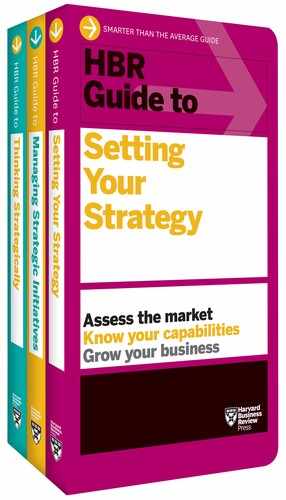CHAPTER 5
Strategy Isn’t What You Say, It’s What You Do
by Roger L. Martin
You sometimes hear managers complain that their organization has no strategy. This isn’t true. Every organization has a strategy: Its strategy is what it does. Think about it. Every organization competes in a particular place, in a particular way, and with a set of capabilities and management systems—all of which are the result of choices that people in the organization have made and are making every day.
When managers complain that their company’s strategy is ineffectual or nonexistent, it’s often because they haven’t quite realized that their strategy is what they’re doing rather than what their bosses are saying. In nine cases out of ten, the company will have an ambitious “strategy statement” or mission of some kind: “We are going to be the best in the world in our industry and always lead innovation to the benefit of all of our customers.”
The bosses will have worked hard to come up with such a statement, and it may very well be a praiseworthy one. But unless it is reflected in the actions of an organization, it is not the organization’s strategy. A company’s strategy is what the company’s people are actually doing, not the slogan their bosses articulate.
The point is that everyone needs to connect the dots. If strategy is what people do rather than what bosses say, it is absolutely critical that each person in the organization knows what it means to take actions that are consistent with the intent of the strategy as asserted.
Strategic choice-making cascades down the entire organization, from top to bottom. This means that every person in the company has a key role to play in making strategy. Performing that role well means thinking hard about four things:
- What is the strategic intent of the leaders of the level above mine?
- What are the key choices that I make in my jurisdiction?
- With what strategic logic can I align those choices with those above me?
- How can I communicate the logic of my strategy choices to those who report to me?
If you as a manager can do the first three of these four, then you will own your choices and own your strategy. If you do the fourth, you will set up your subordinates to repeat these four things and thereby own their choices and their strategy, and pass on the task to the next layer of the company. If each successive layer assumes this level of ownership, the organization can make its bosses’ statement a real strategy rather than an empty slogan.
__________
Roger L. Martin is a professor at and the former Dean of the Rotman School of Management at the University of Toronto. He is a coauthor of Playing to Win (Harvard Business Review Press, 2013).
Adapted from “Strategy Isn’t What You Say, It’s What You Do” on hbr.org, June 18, 2014 (product #H00UXA).
